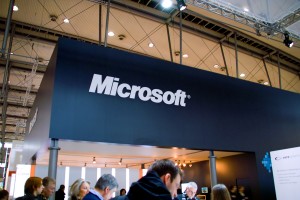New Microsoft Product
New Microsoft Product: A Look at the Technology Giant’s Newest Offerings
A slew of upcoming new Microsoft product has personal and business users alike paying close attention as more details emerge and release dates draw near.
What are these offerings and how does Microsoft plan to introduce them in a way that will be attractive to businesses?
Keep reading to find out, because this post will explore some of the new Microsoft product and how they might be used in a business setting.
Windows 8
Everyone knows Microsoft’s Windows series of operating systems as a flagship product that the company provides and, until now, it seemed like the company has been content with mostly playing it safe as far as Windows is concerned.
With the introduction of Windows 8, released on October 26th, much of what people have become familiar with over the years has changed.
In the three years that have passed since the release of Windows 7, tablets and Smartphones have seen a meteoric rise in popularity, one that has largely outpaced the personal computer.
With that in mind, it makes perfect sense that much of this new system’s design focuses on mobile functionality.
It seems as though the general idea behind Windows 8, and many of the devices on which it will be available, will be to provide and alternative to the Android and iOS platforms that have long dominated the mobile marketplace.
To start, it does this through its touch-focused functionality, even on desktops, and its focus on cloud integration. The latter is a feature that will allow you to carry data and settings across multiple devices, no matter where you are, so that you have some familiarity and are able to get things done much more easily.
This functionality is something that businesses might be able to take advantage of from a productivity standpoint, but how long it will take enough businesses to adopt the new OS for that to be a feasible scenario remains to be seen.
While Windows 8 takes a bold new direction, offers businesses and consumers with an alternative, and has Microsoft’s full backing, there is no denying that this new Microsoft product has an uphill battle when it comes to taking attention and market share away from Android and iOS in the mobile arena.
Likewise, it’s unlikely that desktop and laptop users are completely ready to abandon the way they have been computing for the past few decades. While the trends certainly seem to be moving in a direction that favors touch technology, mobile integration, and a host of other features that are found in Windows 8, widespread adoption might take longer than Microsoft would like.
Surface
Microsoft is also throwing its bid in with its own line of tablets, dubbed “Surface“, which were introduced on October 26th.
The tablet, whose pricing is in line with that of Apple’s iPad, runs a table-specific version of Windows 8 called Windows RT and can only run software that is certified by Microsoft and appears in its Windows store.
With the surface, users also have the option to use the touch cover, or the type cover.
These accessories can protect the device, but also act as keyboards when opened. This makes it possible for a user to have some laptop-like usability when they have the space and, because the device is powered by Windows 8, there is also access to Microsoft’s cloud storage.
With its powerful processor, and large display, it seems as through Microsoft’s Surface tablets are well equipped to hold their own in the tablet marketplace and make the introduction of Windows 8 easier.
Even so, the impact that this new Microsoft product has is something that many businesses might want to wait to see before making the commitment.
Where Microsoft Goes from Here
There’s no doubt that these new offerings have the potential to go far, but they face an uphill battle.
It will be interesting to see if things eventually shift to favor Microsoft and give them yet another area of technology in which they are a dominant force, but you can be sure that the competition between the companies will be beneficial to business and consumers in the end.
